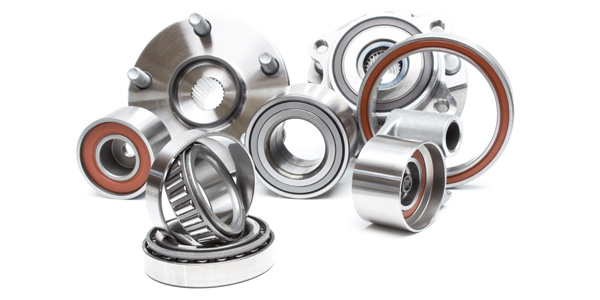
Wheel bearings keep the world rolling by reducing friction and allowing the wheels and axles to spin while a vehicle is in motion. The wheel bearings also support the weight of the vehicle, and must withstand the side forces that occur when cornering. These forces can be quite severe and may lead to early wheel bearing failure if the original equipment bearings are not designed for extended hard driving (think police car, taxi, pizza delivery, racing, etc.).
Most wheel bearings should last upward of 150,000 miles or more with normal driving, and many will last the entire life of the vehicle without failing. But some don’t go the distance, and the reason why is usually corrosion or abrasive wear.
Wheel bearings live in a sealed environment. Most wheel bearings on late-model vehicles are part of a sealed hub assembly or cartridge. Sealed hub assemblies may be used on Front-Wheel Drive (FWD) as well as Rear-Wheel Drive (RWD) cars and trucks, while cartridges are often used in the knuckles of FWD cars. Sealed hubs and cartridges require no periodic maintenance or adjustments. But on older vehicles with serviceable wheel bearings, the bearings should removed, cleaned, inspected and regreased every couple of years.
If outside contaminants such as water, road salt or dirt get past the seals, they can ruin a wheel bearing within a few thousand miles or less. Driving through hub deep water may force water past the seals.
Ball bearings and roller bearings both have highly polished hardened surfaces and close clearances so they can’t tolerate much abrasive wear or pitting caused by rust. Severe overloading can cause surface spalling (flaking) and/or cracking in a bearing, but that’s seldom seen in low mileage bearing failures unless a vehicle has been subjected to some type of abuse.
“Brinelling” is another condition that may occur if the bearings are subjected to high impact loads or vibrations. Brinelling will leave small indentations in the surfaces of the races and rollers.
Heat discoloration (typically a bluish color) is usually the result of loss of lubrication or overloading. Overheating can soften the rollers and races leading to accelerated wear and rapid failure.
A sure sign of impending wheel bearing failure is noise, looseness (play that exceeds .003 to .004 inches) and/or grease streaks radiating outward from the seals. A bad wheel bearing may whine, hum, rumble, growl, chirp or squeal. The sound may come or go, but usually increases with vehicle speed.
A bad wheel bearing should always be replaced without delay because a bearing failure can cause the loss of a wheel or axle.
On some vehicles, the sealed wheel bearing and hub assembly also contain a built-in wheel speed sensor for the antilock brake system. If this sensor fails, it will turn on the ABS warning light and disable the ABS system until the sensor is replaced. But the sensor cannot be replaced separately on these applications. The entire hub assembly must be changed.
Hub units are expensive to replace. Even so, if one has failed the others may be nearing the end of their service life too. Replacing wheel bearings in sets (both fronts, both rears or all four) may be recommended to reduce the risk of bearing failures down the road.
If a customer needs grease for an older vehicle with serviceable wheel bearings, make sure they get a high-temperature wheel bearing grease such as No. 2 NLGI lithium-based grease or a synthetic wheel bearing grease. Ordinary chassis grease must never be used to lubricate wheel bearings. Also, the old grease seals should be discarded and replaced with new ones. Old seals usually leak if reused, which can lead to a loss of lubrication and bearing contamination.












